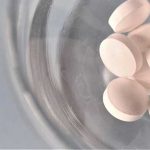- What Are Stimulant Drugs?
- Types Of Stimulants
- Stimulant Side Effects
- Treatment Options For Stimulant Abuse & Addiction
- FAQs
Drug abuse occurs when you use a drug in a manner that harms your health. It often leads to drug addiction (also called substance use disorder).
People abuse many different classes of drugs. One of the most commonly abused drug classes is stimulants.
What Are Stimulant Drugs?
Stimulant drugs are substances that increase your energy, alertness, and attention. They can also boost your confidence and cause euphoria (intense joy).
The drugs come in various forms, including pills, capsules, powders, rocks, and liquids. Depending on its form, a stimulant may be swallowed, injected, smoked, or snorted.
How Do Stimulants Work?
Stimulants speed up your central nervous system. They’re often called “uppers.” In contrast, depressant drugs (such as alcohol and opioids) are called “downers” because they slow down your central nervous system.
Stimulants also increase the activity of certain neurotransmitters (brain chemicals), particularly dopamine and norepinephrine. Dopamine boosts your mood, energy, and concentration. Norepinephrine boosts your heart rate, blood pressure, alertness, and reaction time.
What Are Stimulant Medications Used For?
Many doctors use prescription stimulants to treat attention-deficit/hyperactivity disorder (ADHD) and narcolepsy (a disorder that causes excessive sleepiness).
In addition, some people abuse prescription stimulants by using them in a manner not recommended by their doctor.
For example, they might use prescription drugs more often than prescribed, at higher doses than prescribed, or without a prescription. They may also use illegal stimulants. Most people abuse stimulants to stay awake, boost productivity, promote weight loss, or experience euphoria.
Stimulant Addiction
Stimulant addiction, also called stimulant use disorder, is a serious disease that makes you feel unable to control your stimulant use. The most common symptoms are tolerance and physical dependence.
Tolerance means you need increasingly larger or more frequent doses of stimulants to feel the desired effects.
Physical dependence means your body starts relying on stimulants to function. If you stop using these types of drugs, you may experience stimulant withdrawal symptoms such as:
- anxiety
- depression
- fatigue
- trouble sleeping
- nightmares
- increased appetite
- body aches
- strong cravings for stimulants
Other symptoms of stimulant addiction may include:
- extreme mood swings
- loss of motivation
- loss of interest in activities once enjoyed
- isolation from family and friends
Types Of Stimulants
There are two main types of stimulant drugs: prescription stimulants and illegal stimulants.
Prescription Stimulants
The most common prescription stimulants include:
- amphetamine (sold under the brand names Adderall and Dexedrine)
- atomoxetine (Strattera)
- dexmethylphenidate (Focalin)
- lisdexamfetamine (Vyvanse)
- methylphenidate (Concerta and Ritalin)
Illegal Stimulants
The most common illegal stimulants include:
- cocaine
- methamphetamine (also called meth or crystal meth)
- MDMA (also called ecstasy)
- synthetic cathinones (also called bath salts)
Stimulant Side Effects
Stimulants can have both short-term and long-term side effects.
Short-Term Effects
Short-term side effects of stimulants may include:
- high blood pressure
- increased heart rate
- increased body temperature
- faster breathing
- reduced blood sugar
- loss of appetite
- trouble sleeping
- enlarged pupils
- headache
- dizziness
- nausea
- anxiety
- panic
- irritability and aggression
- psychosis (a loss of connection with reality that usually includes paranoia, delusions, and hallucinations)
In addition, if you take too much of a stimulant, you may overdose. Common symptoms of a stimulant overdose include:
- dangerously high body temperature
- chest pain
- confusion
- seizures
- loss of consciousness
If you or someone you know experiences these symptoms, seek medical help right away. When left untreated, a stimulant overdose can be fatal.
Long-Term Effects
Long-term stimulant use may lead to:
- extreme weight loss
- memory problems
- irregular heartbeat
- heart attack
- stroke
- brain damage
You’re more likely to experience the negative side effects of stimulants if you abuse them. Stimulant abuse, which is a common risk factor in young adults and college students, can also lead to stimulant addiction.
Treatment Options For Stimulant Abuse & Addiction
If you or someone you love struggles with stimulant abuse or addiction, seek help at a drug abuse treatment program.
You can either choose an inpatient program (meaning you live at the treatment center) or an outpatient program (meaning you live at home and regularly visit the treatment center).
In addition, if you have a co-occurring disorder (mental health conditions like depression, bipolar disorder, or schizophrenia), you will need to attend a dual diagnosis treatment program. These programs address stimulant addiction that occurs alongside other mental disorders.
No matter what type of treatment program you choose, make sure it offers treatments proven to help people recover from stimulant abuse and addiction. These treatments include:
Medical Detox
Medical detoxification is typically the first phase of treatment. During detox, a team of healthcare providers will help you safely stop using stimulants with minimal withdrawal symptoms.
Cognitive Behavioral Therapy (CBT)
During cognitive behavioral therapy (CBT), a therapist will teach you healthy coping skills to manage stimulant cravings. They can also help you manage any underlying mental health concerns that contributed to your stimulant abuse.
Contingency Management
In contingency management (CM), you receive tangible rewards, such as gift cards, for passing drug tests and meeting other recovery-related goals. These rewards can help motivate you to continue with your recovery.
Aftercare Planning
Before you finish treatment, your doctors can help you create a personalized aftercare plan. This plan will include interventions designed to reduce your risk of relapse, such as:
- ongoing therapy
- support groups
- transitional housing
- employment assistance
To learn more about treatment options for stimulant abuse and addiction, please contact Northeast Addictions Treatment Center. We offer a variety of personalized, evidence-based treatments to help you or your loved one recover from substance abuse.
FAQs
What Stimulants Are Commonly Abused?
People abuse both illegal and prescription stimulants.
The most commonly abused illegal stimulants include cocaine, methamphetamine, MDMA, and synthetic cathinones.
The most commonly abused prescription stimulants include:
amphetamine (Adderall)
dextroamphetamine (Dexedrine)
lisdexamfetamine (Vyvanse)
methylphenidate (Ritalin)
Both illegal and prescription stimulants pose serious health risks when abused, including addiction.
Learn more about Commonly Abused Stimulant Drugs
How Do Stimulants Calm ADHD?
Stimulant medications can decrease ADHD symptoms by increasing levels of the brain chemicals dopamine and norepinephrine. Increasing these neurotransmitters helps to improve focus and attention, while decreasing hyperactive behaviors.
Learn more about ADHD Stimulant Medications
What Stimulants Are Linked To Weight Gain?
Stimulant medications used to treat ADHD have been linked to weight gain, but so far, it’s only been shown in adolescents.
Adolescents who take stimulant ADHD medications early in life have been shown to have a higher BMI as adults than adolescents who didn’t take those same medications.
Learn more about Stimulant Medications & Weight Gain
How Long Do Stimulants Stay In Your System?
Different stimulant drugs offer a wide range of different potencies, lengths of effect, and detection periods.
For example, cocaine’s effects only last around thirty minutes at most, with urine tests effective for up to three days. Methamphetamine, on the other hand, provides hours of effect and can be detected in the urine for five days or longer.
To learn more, read How Long Do Stimulant Drugs Stay In Your System?
Sources
Written by
Northeast Addition Editorial Team
©2024 Northeast Addition Center | All Rights Reserved
This page does not provide medical advice.




